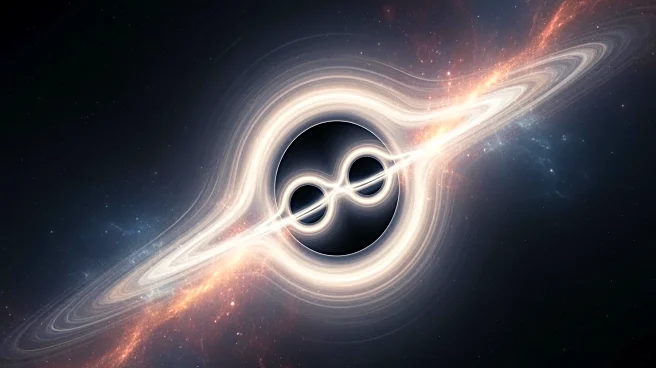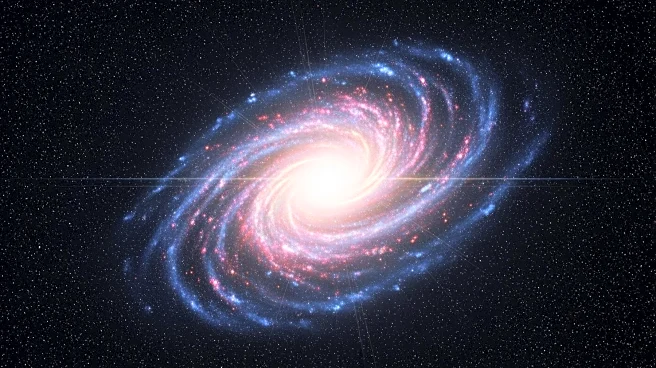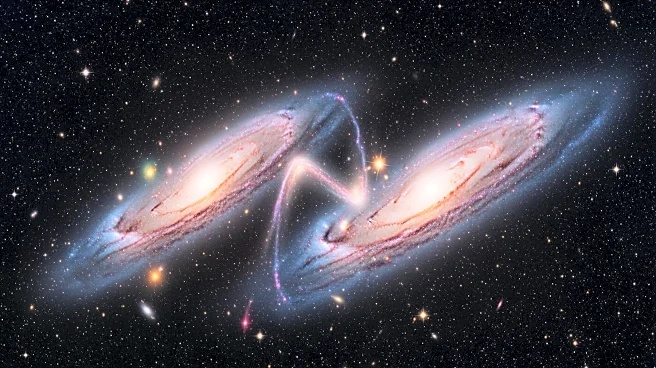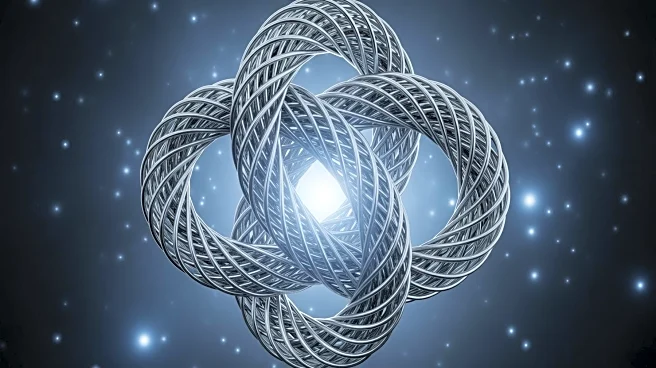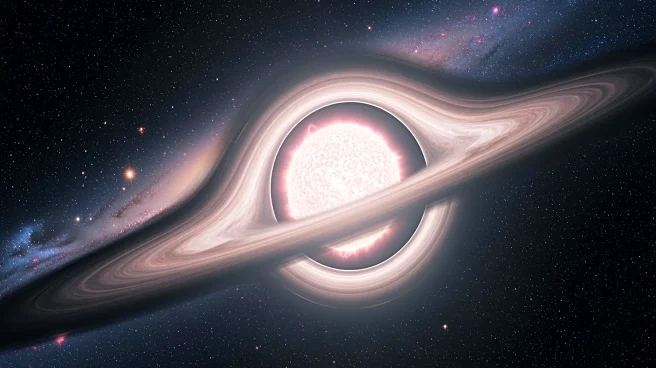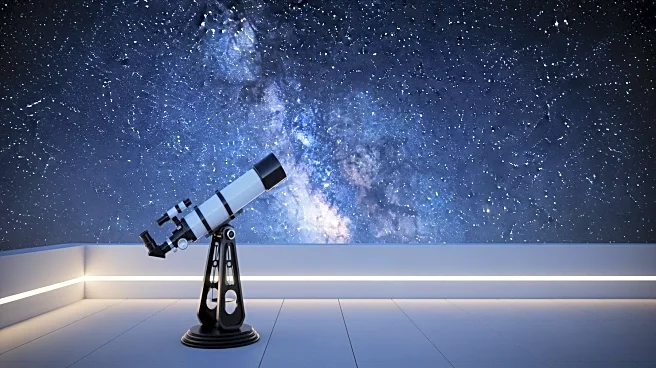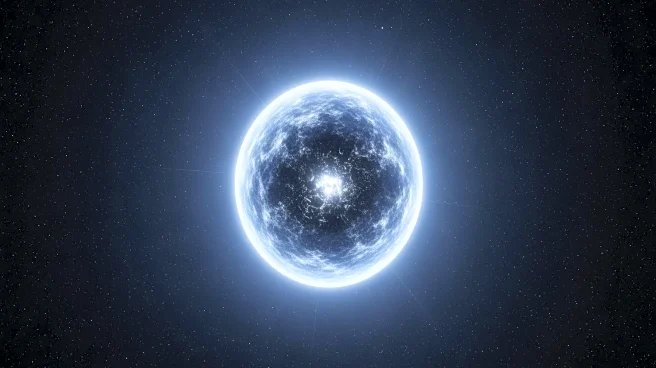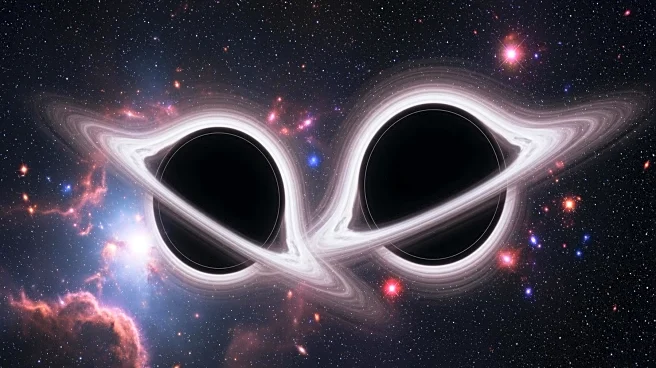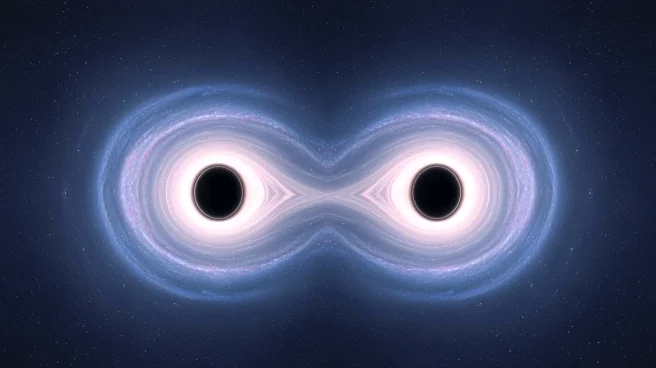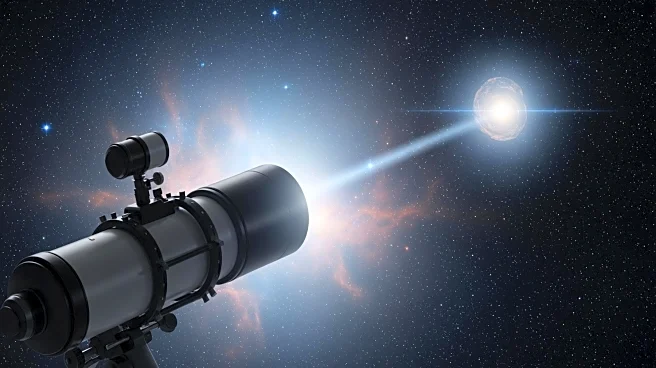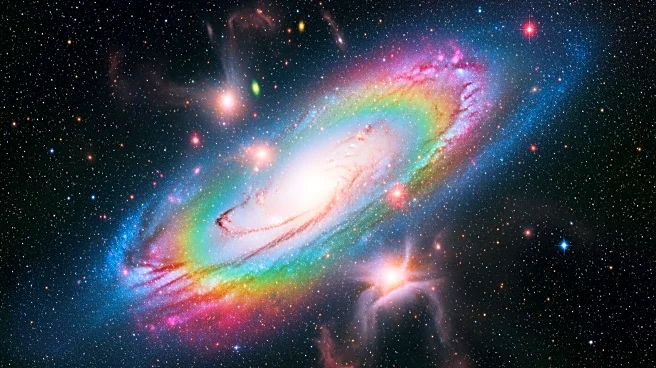What's Happening?
Scientists have captured the clearest signal yet of black holes colliding, confirming Stephen Hawking's prediction about black hole behavior. Using upgraded LIGO detectors, researchers observed two black holes merging
over a billion light-years away, producing precise space-time ripples. This observation marks a significant advancement in gravitational wave astronomy, allowing scientists to study cosmic events through their gravitational effects rather than traditional light-based methods. The detection confirms Hawking's black hole area theorem, which posits that the total surface area of black holes cannot decrease. The merger increased the surface area, providing strong evidence for Hawking's theory.
Why It's Important?
This discovery is pivotal for the field of astrophysics, as it opens new avenues for understanding the universe. By confirming Hawking's theorem, scientists can further explore the relationship between general relativity and quantum physics. The ability to detect gravitational waves with such precision enhances our understanding of cosmic phenomena and supports the development of new technologies in quantum precision engineering. The findings also contribute to the broader scientific endeavor of uniting different branches of physics, potentially leading to breakthroughs in quantum gravity.
What's Next?
The global network of detectors, including LIGO, Virgo, and KAGRA, continues to identify black hole mergers, with plans to expand their reach deeper into space. Future projects like the Einstein Telescope and Cosmic Explorer aim to build larger detectors, allowing scientists to observe the earliest black hole mergers and the gravitational waves from the universe's inception. These advancements promise to revolutionize cosmic exploration and deepen our understanding of the universe's origins.
Beyond the Headlines
The detection of gravitational waves not only confirms theoretical predictions but also challenges existing ideas about black holes and neutron stars. The discovery of lighter black holes and asymmetrical mergers prompts reevaluation of the mass gap between neutron stars and black holes. As technology advances, scientists anticipate uncovering more surprising cosmic phenomena, further enriching our understanding of the universe.
